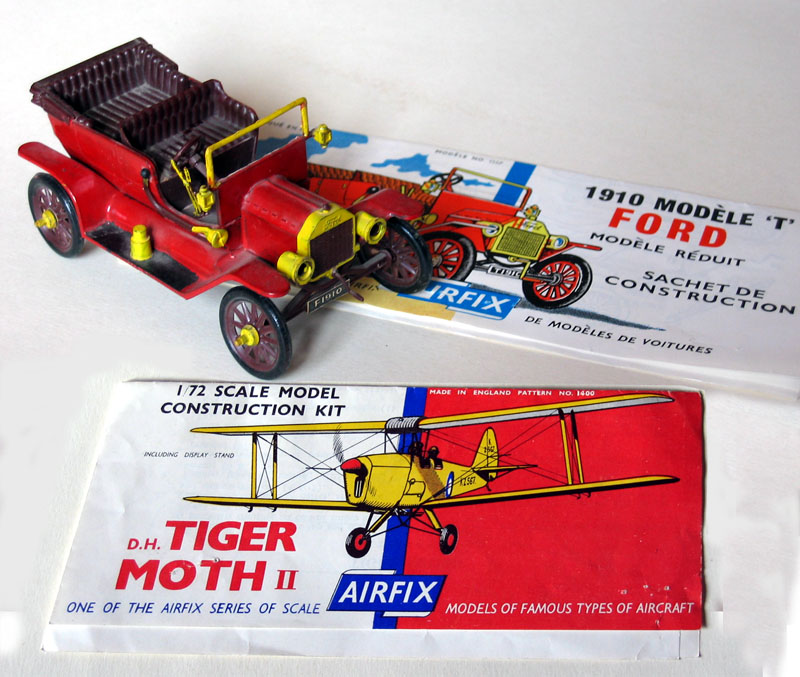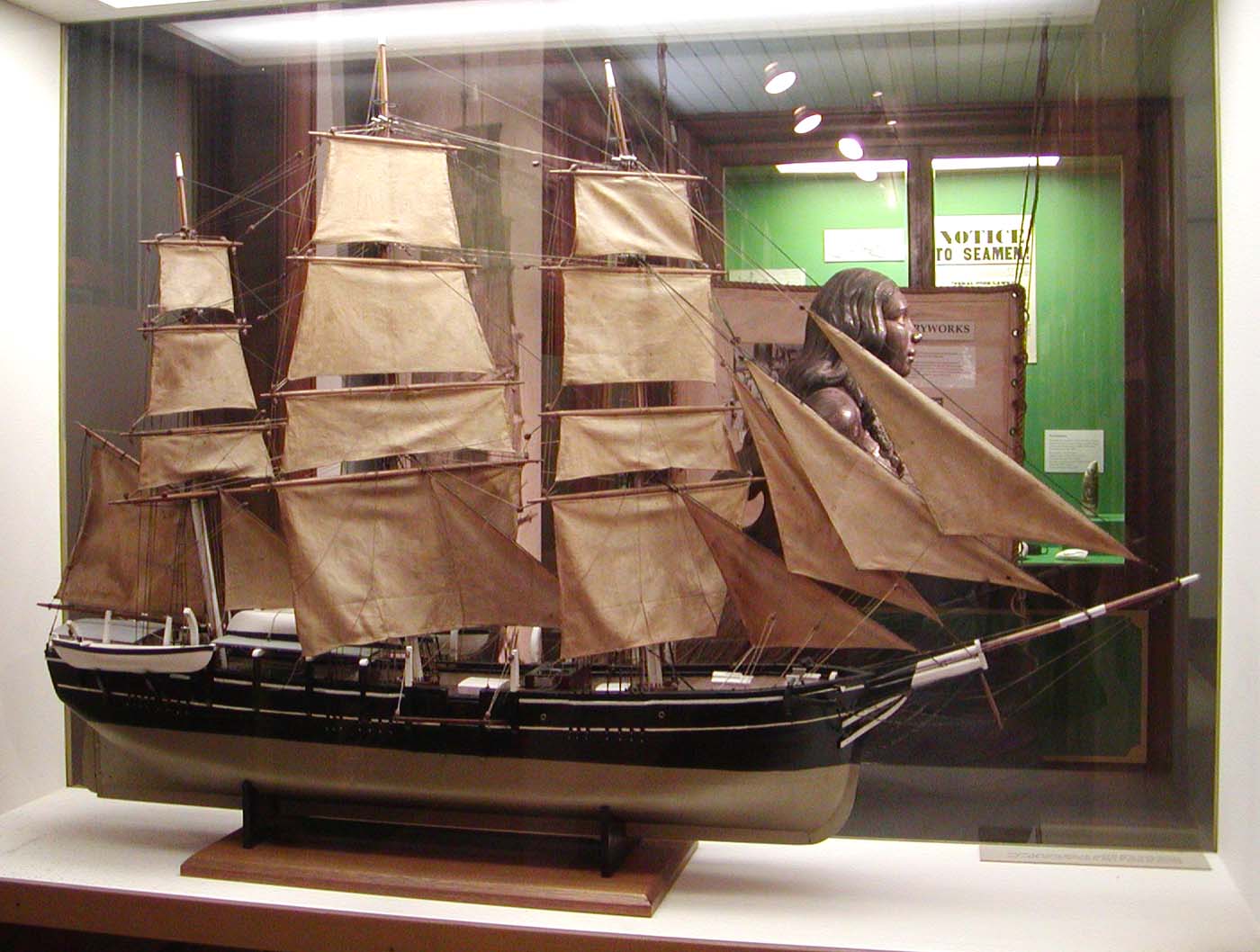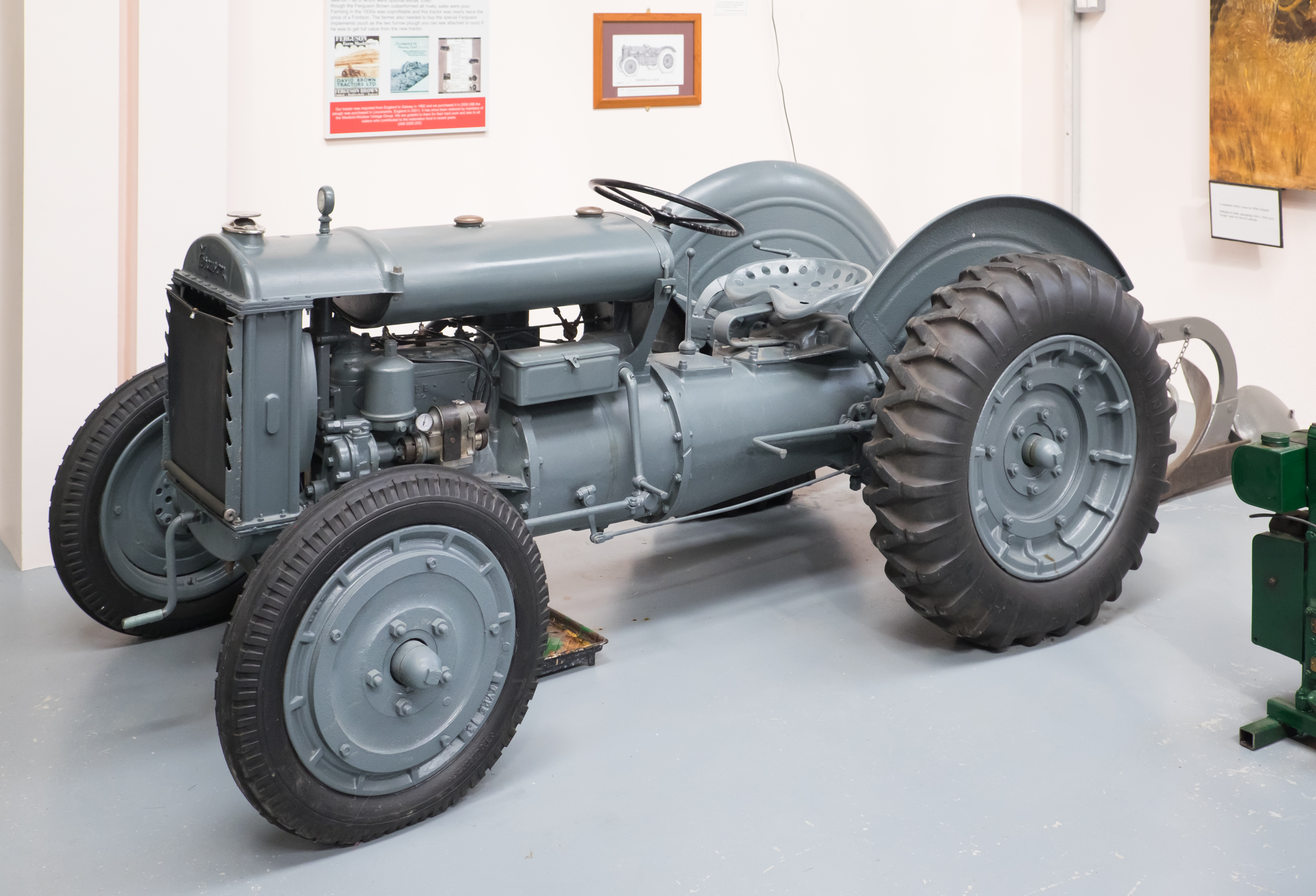|
Airfix
Airfix is a British brand and former manufacturing company which produced injection-moulded plastic scale model kits. In the U.K., the name 'Airfix' is synonymous with plastic models of this type, often simply referred to as "an airfix kit" even if made by another manufacturer. Airfix manufactured a wide range of model products such as cars, aircraft, ships, commercial vehicles, military vehicles, railways, and figures. Founded in 1939, Airfix was owned by Humbrol from 1986 until the latter's financial collapse on 31 August 2006. Since 2007, both Humbrol and Airfix have been owned by Hornby. History Airfix was founded in 1939 by a Hungarian businessman Nicholas Kove, initially to manufacture inflatable rubber toys. The brand name was selected to be the first alphabetically in trade directories. In 1947, Airfix introduced injection moulding, initially producing pocket combs. In 1949, the company was commissioned to create a promotional model of a Ferguson TE20 tract ... [...More Info...] [...Related Items...] OR: [Wikipedia] [Google] [Baidu] |
Nicholas Kove
Nicholas Kove (born Miklós Klein 1891 in Anarcs, Szabolcs County, Kingdom of Hungary – died 17 March 1958 in London) was a Hungarian-British businessman best known for founding the Airfix plastic toy company. Biography His birth name was Klein but he magyarised this to Köves (pronounced "Kurvesh") and subsequently anglicised it to Kove. An energetic and resourceful man, he was a cavalry officer in the Austro-Hungarian army in the First World War but was captured by the Russians. He was interned in a camp near the Korean border but escaped across Siberia with the help of Catholic priests. It took him four months to return home to Anarcs. After the war he worked as an assistant minister in the short-lived Communist government of Béla Kun. After the fall of the Hungarian Soviet Republic, he emigrated to Algiers in 1922 with his wife Clothilde and baby daughter Margit. In 1934 the family moved to Barcelona where Kove started a plastics factory; at the outbreak of the Spanish ... [...More Info...] [...Related Items...] OR: [Wikipedia] [Google] [Baidu] |
Rosebud Kitmaster
Rosebud Kitmaster is the brand name of a short-lived but critically acclaimed range of plastic assembly kits, manufactured in the United Kingdom by Rosebud Dolls Ltd of Raunds, Northamptonshire. Introduced from May 1959, the range rapidly expanded to include 34 models of railway locomotives and passenger car (rail), coaches in OO gauge, OO, HO gauge, HO and TT gauge, TT scales, and eventually, one motorcycle in 1:16 scale. The assets of Rosebud Kitmaster were sold to Airfix, Airfix Products Ltd in late 1962. Nine locomotives and the motorcycle were later re-issued under the Airfix brand. The Airfix company was taken over by Humbrol in 1986, but the company went down in August 2006. on the BBC, Published 30 August 2014] Hornby Railways, H ... [...More Info...] [...Related Items...] OR: [Wikipedia] [Google] [Baidu] |
Hornby Railways
Hornby Railways is a British rail transport modelling, model railways manufacturing company. Its roots date back to 1901 in Liverpool, when founder Frank Hornby received a patent for his Meccano construction toy. The first clockwork train was produced in 1920. In 1938, Hornby launched its first 00 gauge train. In 1964, Hornby and Meccano were bought by their competitor, Tri-ang, and sold when Tri-ang went into receivership. Hornby Railways became independent again in the 1980s, and became listed on the London Stock Exchange, but due to financial troubles reported in June 2017, became majority owned by British turnaround specialist Phoenix Asset Management. Apart from trains, Hornby also commercialises model cars and other vehicles through its brands Bassett-Lowke, Corgi Toys, Corgi, Jouef, Lima (models), Lima, Pocher, and Scalextric. History Early history: 1920–1938 Hornby was at first a tradename for the railway productions of Meccano Ltd and based around Liverpool. U ... [...More Info...] [...Related Items...] OR: [Wikipedia] [Google] [Baidu] |
Humbrol
Humbrol Limited is a British brand and former manufacturer of paints, solvents, and other accessories for scale model kits and toys. In the past, Humbrol produced under its own brand and the Airfix, Sky Marks, Young Scientist, 1st Gear, High Speed and W. Britain brands. In 2006, the company entered administration, but later the same year was acquired by Hornby plc, who has since re-launched the brand. History Humbrol was founded in Kingston upon Hull as the "Humber Oil Company" in 1919. After supplying oil for bicycles the company produced black paint for renovating them and then a range of twelve colours. During the 1950s and 1960s, Gerald Barton turned Humber Oil Company into "Humbrol" which developed a range of model paints and other modelmaking paraphernalia. In 1976, Humbrol became part of the Hobby Products Group of the international Borden, Inc. group. Five years later, Borden also acquired the French kit manufacturer Heller. The Airfix model company joined the gro ... [...More Info...] [...Related Items...] OR: [Wikipedia] [Google] [Baidu] |
Plastic Model
:''In art and architecture, plastic model may also be any three-dimensional physical model, regardless of material.'' :''In mechanical engineering, a plastic model is a mathematical model of a material which incorporates plasticity.'' 300px, A 4-year-old boy starts painting an assembled plastic model of the South Goodwin Lightship A plastic model is a plastic scale model manufactured as a kit, primarily assembled by hobbyists, and intended for static display. A plastic model kit depicts various subjects, with a majority depicting military and civilian vehicles. A kit varies in difficulty, ranging from a "snap-together" model that assembles straight from the box, to a kit that requires special tools, paints, and cements. Subjects The most popular subjects of plastic models by far are vehicles such as aircraft, ships, automobiles, and armored vehicles such as tanks. The majority of models depict military vehicles, due to the wider variety of form and historical context compared ... [...More Info...] [...Related Items...] OR: [Wikipedia] [Google] [Baidu] |
Scale Model
A scale model is a physical model which is geometrically similar to an object (known as the prototype). Scale models are generally smaller than large prototypes such as vehicles, buildings, or people; but may be larger than small prototypes such as anatomical structures or subatomic particles. Models built to the same scale as the prototype are called mockups. Scale models are used as tools in engineering design and testing, promotion and sales, filmmaking special effects, military strategy, and hobbies such as rail transport modeling, wargaming and racing; and as toys. Model building is also pursued as a hobby for the sake of artisanship. Scale models are constructed of plastic, wood, or metal. They are usually painted with enamel, lacquer, or acrylics, and decals may be applied for lettering and fine details. They may be built from scratch, or from commercially made kits, either out of the box or modified (known as kitbashing). Model prototypes include all type ... [...More Info...] [...Related Items...] OR: [Wikipedia] [Google] [Baidu] |
Rail Transport Modelling
Railway modelling (UK, Australia, New Zealand, and Ireland) or model railroading (US and Canada) is a hobby in which rail transport systems are modelled at a reduced scale. The scale models include locomotives, rolling stock, streetcars, tracks, signalling, cranes, and landscapes including: countryside, roads, bridges, buildings, vehicles, harbors, urban landscape, model figures, lights, and features such as rivers, hills, tunnels, and canyons. The earliest model railways were the ' carpet railways' in the 1840s. The first documented model railway was the Railway of the Prince Imperial (French: Chemin de fer du Prince impérial) built in 1859 by emperor Napoleon III for his then 3-year-old son, also Napoleon, in the grounds of the Château de Saint-Cloud in Paris. It was powered by clockwork and ran in a figure-of-eight. Electric trains appeared around the start of the 20th century, but these were crude likenesses. Model trains today are more realistic, in addition to b ... [...More Info...] [...Related Items...] OR: [Wikipedia] [Google] [Baidu] |
James Hay Stevens
James Hay Stevens ''Air pictorial: journal of the Air League'' (1973), Volume 35 (page 146) (10 November 1913 – 1973) was an aviation journalist, editor of ''Aircraft Engineering'' (1945-1957) magazine, illustrator and pilot. He created the Skybirds range of 1:72 scale model aircraft kits produced by A. J. Holladay & Co., the same scale later being adopted by Airfix. Between 1938-1939 he contributed articles and illustrations to ''Air Stories'' magazine, and between 1959–1967, he contributed articles to the newspaper ''The Times''.''The Times'' (London): "Building Aircraft" Tuesday, 1 September 1959, p. 13; Issue 54554. "Supersonic Traval" Thursday, 1 September 1960; p. 4, Issue 54865. "The Supersonic Airliner" Friday, 31 August 1962; p. 8, Issue 55484. "It is Subsonic for the Majority in the Next Decade" Thursday, 25 April 1963; pg. iii, Issue 55684. "Vertical And Short Take-Off" Thursday, 6 June 1963; pg. x, Issue 55720. "Blowing Themselves Up" Tuesday, 21 July 1964; pg. iii ... [...More Info...] [...Related Items...] OR: [Wikipedia] [Google] [Baidu] |
Scale Model
A scale model is a physical model which is geometrically similar to an object (known as the prototype). Scale models are generally smaller than large prototypes such as vehicles, buildings, or people; but may be larger than small prototypes such as anatomical structures or subatomic particles. Models built to the same scale as the prototype are called mockups. Scale models are used as tools in engineering design and testing, promotion and sales, filmmaking special effects, military strategy, and hobbies such as rail transport modeling, wargaming and racing; and as toys. Model building is also pursued as a hobby for the sake of artisanship. Scale models are constructed of plastic, wood, or metal. They are usually painted with enamel, lacquer, or acrylics, and decals may be applied for lettering and fine details. They may be built from scratch, or from commercially made kits, either out of the box or modified (known as kitbashing). Model prototypes include all type ... [...More Info...] [...Related Items...] OR: [Wikipedia] [Google] [Baidu] |
Model Military Vehicle
Model military vehicles range in size and complexity; from simplified small-scale models for wargaming, to large, super-detailed renditions of specific real-life vehicles. Scales The 'scale' is the proportion of actual size the replica or model represents. Scale is usually expressed as a ratio (e.g. '1:35') or as a fraction (e.g. '1/35'). In either case it conveys the notion that the replica or model is accurately scaled in all visible proportions from a full-size prototype object. Thus a 1:35 scale model tank is 1/35 the size of the actual vehicle upon which the model is based. Models generally make no attempt to replicate scale weight, only size. The most popular scales, by far, are 1:35 and 1:72. Other less-commonly used scales for commercially produced kits include: 1:1, 1:6, 1:9 ("Traditional" scale), 1:12, 1:16 (RC tanks, scale model kits), 1:24, 1:25, 1:30, 1:32, 1:48, 1:50, 1:64, 1:87 (railroad HO scale), 1:144, 1:250, 1:285, 1:300, and 1:350. A relativel ... [...More Info...] [...Related Items...] OR: [Wikipedia] [Google] [Baidu] |
Model Ship
Ship models or model ships are scale models of ships. They can range in size from 1/6000 scale wargaming miniatures to large vessels capable of holding people. Ship modeling is a craft as old as shipbuilding itself, stretching back to ancient times when water transport was first developed. History Ancient Mediterranean Ancient ship and boat models have been discovered throughout the Mediterranean, especially from ancient Greece, Egypt, and Phoenicia. These models provide archaeologists with valuable information regarding seafaring technology and the sociological and economic importance of seafaring. In spite of how helpful ancient boat and ship models are to archaeologists, they are not always easily or correctly interpreted due to artists’ mistakes, ambiguity in the model design, and wear and tear over the centuries. Ships "were among the most technologically complex mechanisms of the ancient world." Ships made far-flung travel and trade more comfortable and economic ... [...More Info...] [...Related Items...] OR: [Wikipedia] [Google] [Baidu] |
Ferguson Company
The Ferguson-Brown Company was a British agricultural machinery manufacturing company formed by Harry Ferguson in partnership with David Brown. Ferguson-Brown produced the Model A Ferguson-Brown tractor incorporating a Ferguson-designed hydraulic three-point linkage hitch. Of the 1,356 produced 400 of the tractors were sold in Scandinavia. The early tractors were fitted with the Coventry Climax model E engine which was a descendant of the American Hercules engine as fitted to the prototype "Black tractor" later the engine manufacture was taken on by David Brown Ltd. who made a number of improvements such as a deeper sump, some of the earlier tractors suffered from oil starvation on hillside work. It has been narrowed down by surviving examples that the engine change from the Coventry Climax to the David Brown took place around tractors serial numbers 525 to 528. Harry Ferguson surmised that the tractor hitch was the key to having a better plough and designed a simpler tractor ... [...More Info...] [...Related Items...] OR: [Wikipedia] [Google] [Baidu] |

.png)






